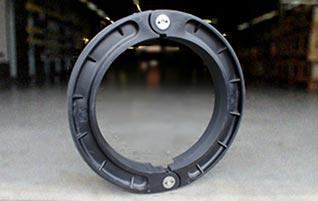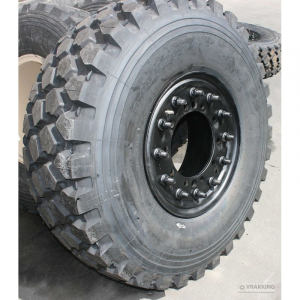I was asked by the moderator of an RV trailer forum to jump in on the topic by one of the members. Here is my response. I thought the info might be of interest to others.
My prime area of expertise is on tires, but I have also done extensive long-distance towing with a C3500 (454 gas) Dually with an 8' slide-in camper in the bed and pulling a 26' enclosed trailer with a Camaro race car,
tools, etc inside. I have towed from OH to FL and Calif and even made a trip on the Blue Ridge Pkwy while towing the race car trailer so I think I understand the handling situation of a loaded truck and trailer.
Some observations on info in some of the posts in this thread.
"P" type tires on the TV should be an indication that the TV should probably be limited to single axle "pop-up" or small boat trailers. It is important to remember that P-type tires must be "de-rated" in load capacity by 10% as they are not intended for truck or trailer application. Multi-axle trailers almost always indicate the need for a real truck (not just something that looks like one) This would mean LT type tires and 3/4 or 1-ton vehicle rating.
HERE is a good post on how to match a Truck & Trailer. It is much better to do a little work and learn the ratings of both your truck and trailer than relying on the salesperson telling you that you can pull a 5-ton trailer with a Ford Ranger just so he can make the sale.
P vs LT type tires. No, they do not make tires "between" these two types. If there is no P or LT before the numbers in the size then it is what is known as a "Euro-Metric" type tire and with an inflation of 36, it is definitely a P-type tire.
The P and LT and ST designations are found in tires designed and intended for highways in America. The inflation level molded on the tire sidewall is the give-away.
35 or 36 is standard Passenger type tire
50, 65, or 80 or higher is an LT type tire or a trailer only ST type.
In Europe, they use a "C" after the size to identify "Commercial" use i.e. LT. Don't confuse this with Load Range C which is the US Light Truck Load Range (old ply rating)
Tires marked "XL" or "Extra Load" are Passenger type tires (Max infl. 42 or 51 on some) that aren't quite LR-C Light Truck tires. This type was originally intended for "Station Wagons" which have been replaced by SUV but are many times used on light duty trucks as a cost-savings measure. (Passenger are really LR-B or "standard" load except for the XL passenger tires, but none say LR-B)
Vehicle "Sway" is a function of the tire inflation and the suspension design and vehicle loading. When inflated to the sidewall pressure there can be different sidewall stiffness but the difference should not be significant within the same Type tire and same Load Range.
Weights. Empty weights are really of little value in determining what will run down the highway safely. Fully loaded and hooked up individual axle loads are what is needed. With trailers (and motorhomes) it is even better to know the scale weight on each individual tire position when the vehicles have been loaded to their heaviest, as many RVs have been found to be 500 to 1,000# out of balance side to side. No, you don't have to get on a scale every trip but should have at least one set of readings when fully loaded.
Stability.
Increased tire inflation will almost always result in improved stability.
New Tire "squirm". When you apply any new tire to any vehicle you may notice for the initial 100 to 200 miles less stability than on the tires you just took off. This happens for a few different reasons.
1. All tires have a "release agent" that allows them to be removed from the curing mold. This is a slippery substance that will wear off in a few miles.
2. When you buy new tires you are not making a clean, apples to apples comparison. You, as the driver, are comparing a worn older tire with a new full tread tire. Even if the tires were identical in construction and rubber compound you will get crisper and more solid handling with a worn tire (less tread) than a new (more tread) tire. In car racing, our tires may only have 2/32 or 3/32 tread depth while new tires come with 8/32 to 12/32 or more tread depth. In some classes of racing that require the use of "street" tires new tires have most of their tread "shaved" off with the express purpose of improving handling.
Getting scale weights. While you may not want to make a special trip to a truck scale or gravel pit or feed supply to get your individual tire loads you can at least stop at a truck stop on the Interstate on your next trip to get a reference number for each axle.
HERE is a worksheet to allow you to calculate individual position weights.
and
HERE is a Youtube video on how to weigh on a truck scale.
Trailer tire inflation:
To lower the Interply Shear (force trying to create a tread separation) You should run AS A MINIMUM the inflation required to support 110% of the MEASURED load on the most loaded tire. Better yet run the tire sidewall inflation number. You can learn more from
THIS Google search or go to my blog and read up more than you ever really want to know about the tire mechanics involved in the tire construction.
Hope this helps.














